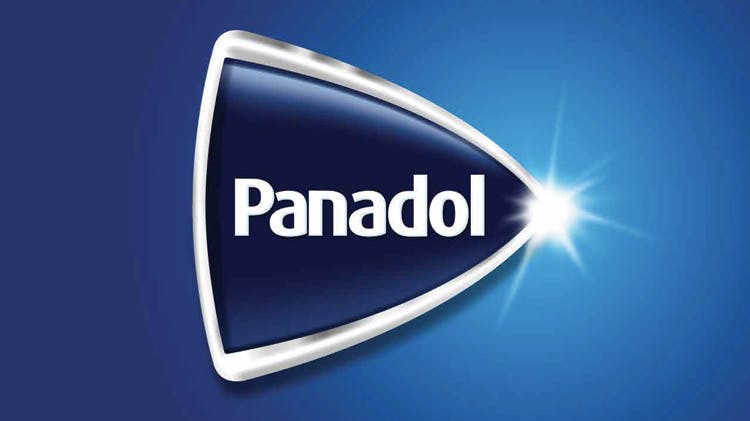Panadol Actifast
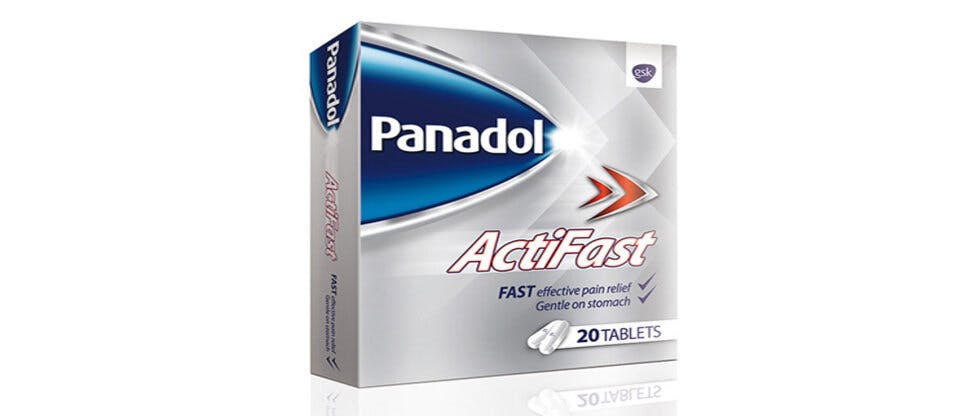
For fast relief1*
With 2x faster disintegration and absorption than standard paracetamol tablets, Panadol Actifast relieves pain fast1 and can even be taken on an empty stomach.2,3†
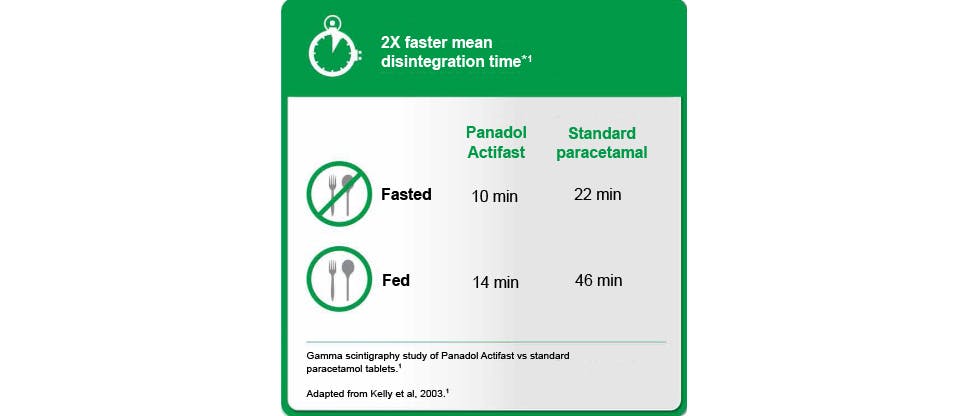
2X faster mean disintegration time1*
Gamma scintigraphic images (scinitigraphy is a form of radio-imaging or scanning that involves injecting a radioisotope that emits gamma rays into a patient’s vein, which are captured as images)4 of the stomach showed that Panadol Actifast disintegrated 2x faster than standard paracetamol tablets, whether patients were fasted or fed.1
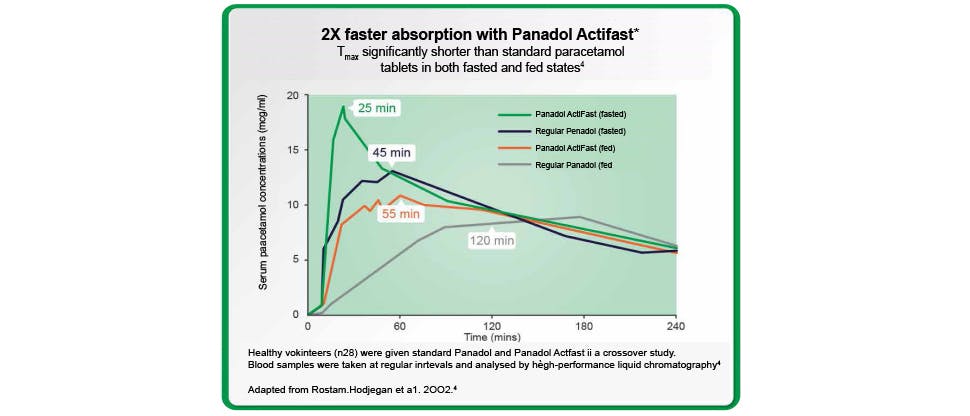
2X faster absorption with Panadol Actifast5,6*
Twenty-eight healthy volunteers were given standard paracetamol tablets and Panadol Actifast in a crossover study. Blood samples were taken at regular intervals and analysed by high-performance liquid chromatography.
The time taken to reach maximum dose (Tmax) of Panadol Actifast was significantly shorter than standard paracetamol tablets in both fasted and fed subjects.5

Pain relief ‡ 10 minutes faster7*
Panadol Actifast was shown to provide some pain relief 10 minutes faster than standard paracetamol. In a single centre randomised, double blind, single-dose study, the time to onset and the degree of pain relief were determined with either two Panadol Actifast tablets (n=90) or standard paracetamol tablets (n=90) administered to patients who had undergone dental extraction. The time to onset of meaningful pain relief was 30 minutes vs. 40 minutes for standard paracetamol.7

Brody wants to get rid of his headache fast
Brody is a young executive working his way up the corporate ladder. With long workdays and tight deadlines, it’s not surprising he sometimes suffers from headaches. He’s seen his doctor about it and was glad to hear that these were nothing more serious than tension type headaches, though it impacts his life and work at times.
Brody needs something that works fast to relieve his headaches when he gets them. He also wants something gentle for his stomach, as regular meal times aren’t part of his lifestyle.
Panadol Actifast offers Brody the fast relief he needs and is gentle to the stomach.
Recommend Panadol Actifast for fast relief
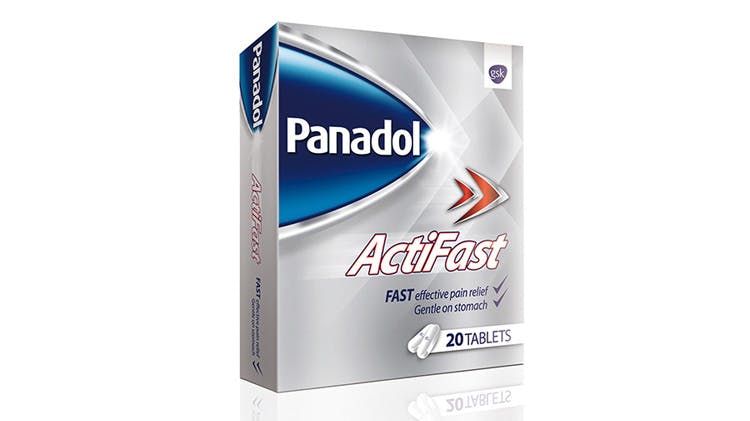
Panadol Actifast
Release paracetamol even before it reaches the stomach.1 Does not compromise the stomach’s protective lining and can be taken even on an empty stomach or by those at risk of stomach ulcers.2,3†
Learn more
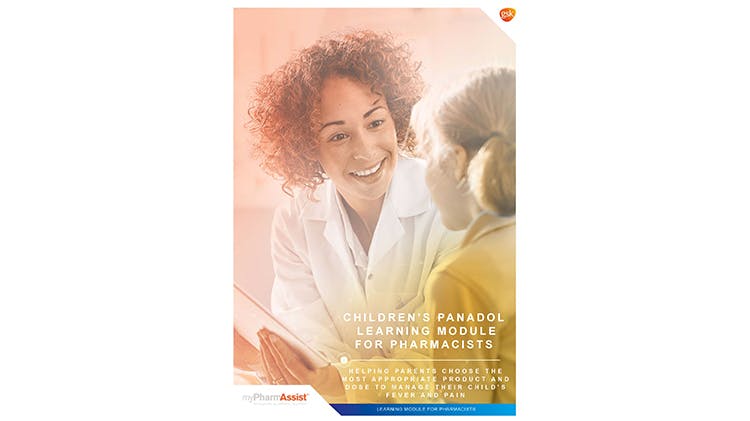
Joint pain osteoarthritis
Based on the 2018 Global Pain Index (GPI), 92% of 24,000 people surveyed around the world suffered from some pain and 87% experienced joint pain. Discover more about joint and osteoarthritic pain including signs and symptoms and, how to manage them.

Managing children’s fever and pain
Specially tailored for pharmacists, this module presents in-depth sharing of children’s fever and pain conditions and how to manage them.
Learn from the experts
Bite sized information from experts in the field of pain management. This video is about joint pains and osteoarthritis.
